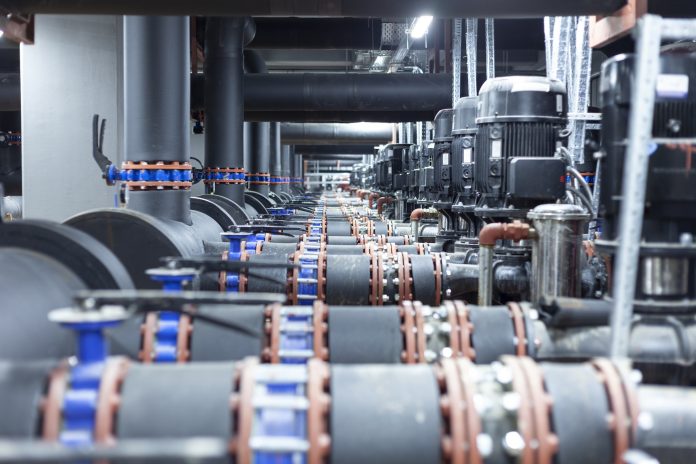Chris Davis, Head of Marketing at Hysopt, explains how advanced HVAC simulation technologies are supporting the NHS to decarbonise heat across its existing estates and the New Hospital Program
The NHS was the world’s first health service to commit to becoming Net Zero with a target to eliminate all direct emissions (NHS Carbon Footprint) by 2040 and indirect emissions (NHS Carbon Footprint Plus) by 2045.
NHS estates and facilities play a critical role in achieving this ambition, with energy used in buildings accounting for 40% of operational carbon emissions (scope 1 and 2).
Meanwhile, embodied emissions from construction projects contribute to the wider “NHS Carbon Footprint Plus”.
HVAC Optimisation in Healthcare
Hospitals have high energy usage due to continuous operation and extensive use of HVAC systems and clinical equipment.
ERIC data and international case studies demonstrate the significant operational efficiencies and carbon emission benefits that can be achieved through optimising and improving the performance of HVAC systems. However, the scale and complexity of heating and cooling installations in most hospitals means that advanced HVAC simulation tools are becoming essential to successfully achieve this.
Performance gaps and opportunities in HVAC simulations
Studies of over 400 HVAC installations, including those in hospitals, show that most suffer from a “Performance Gap” where actual performance falls short of expected levels, resulting in higher costs and emissions. The gap can be as high as 30-40%.
Even in new or upgraded systems, opportunities are missed to optimise performance.
Evidence from independent studies characterises the main causes of performance gaps to include:
• Lack of transparency between energy modelling tools used in early project stages and engineering tools used later on
• Complexity and oversizing of the HVAC system design
• Uncertainty about how specified equipment, plant and controls will work together in practice
• Changes after design (i.e. value engineering) impacting on original design intent
• Poor commissioning
• Poor practice in operation
Advanced HVAC simulation tools help eliminate these issues by providing the necessary continuity and transparency about system performance throughout the design, engineering commissioning and operational phases.
New Hospital Program with a net-zero standard
The NHS plans to build 40 new hospitals by 2030, all to net-zero carbon standard.
On 22nd February 2023, the NHS Net Zero Building Standard was launched, outlining performance criteria for net-zero carbon buildings in construction and operation.
The Standard highlights the importance of using digital techniques, including advanced energy modelling and digital twins to “optimise buildings and systems, reduce the performance gap, and drive resource efficiency.”
What are HVAC “digital twin” simulation and calculation tools?
HVAC “digital twins” are essential to ensure operational performance targets are met under the new standard. By creating a “virtual replica” of the entire installation, simulations enable testing of HVAC designs against various operational conditions, to provide evidence that performance targets beyond traditional “design for compliance” will be met.
Digital twins aid in design reviews, value engineering, commissioning, fine-tuning, and monitoring of buildings. Feedback from past projects also demonstrates using advanced simulation reduces construction costs by accurately sizing plant and systems for expected demands.
Furthermore, once the installation is operational the digital twin continues to act as a performance benchmark and reference point for maintenance and management to ensure that performance gaps do not emerge during the operational lifecycle of the installation.
Optimising and decarbonising existing NHS heat networks Reducing lifetime operational carbon in existing estates is vital for the NHS to achieve its zero-carbon healthcare vision.
On large hospital sites, heat is often supplied to multiple buildings from a central source. However recent work by BEIS indicates many “heat networks”, including those within NHS estates, operate inefficiently.
This leads to higher energy costs, increased carbon emissions, and poor thermal comfort levels in buildings.
To address these issues, HVAC digital twins can be used to help optimise performance and ensure buildings are suitable for connection to heat networks.
A recent example of this approach allowed a large NHS Trust to pinpoint that excessive gas consumption was being caused by poorly performing heating distribution systems in buildings connected to their heat network.
Simulations from the digital twin showed that with modest investment costs, changes to the installation could eliminate energy wastage by 10 million kWh per year, reducing energy costs by £285,000 annually. With energy prices having increased significantly since the study was completed and the Trust having now exited its previous fixed-price energy contract, the unnecessary costs avoided at “new world energy price” levels is closer to £1m per year.
Heat Network Efficiency Scheme (HNES)
The recently formed Department for Energy Security and Net Zero aims to improve the performance of heat networks and their connected buildings through the new Heat Network Efficiency Scheme, which launched in February 2023.
NHS Trusts in England and Wales can benefit from up to £2m in revenue grants, covering 100% of optimisation study costs, with HNES typically funding up to £24,000 per project. HVAC system digital twin studies are well aligned with HNES requirements.
£30m in capital grants, with 50% match funding for eligible improvement measures are also available. Further details can be found in the Heat Network Efficiency Scheme Guidance for Applicants.
In Summary
In conclusion, decarbonising heat is a vital aspect of reducing the NHS’s carbon footprint, whether in new hospitals or existing hospital heat networks. Advanced HVAC simulation tools can play a crucial role in achieving this goal.
To learn more about this alternative approach to reducing heat network performance gaps watch the recent Hysopt webinar “Making Public Buildings Low Carbon Heat Ready”.

This work is licensed under Creative Commons Attribution-NonCommercial-NoDerivatives 4.0 International.











